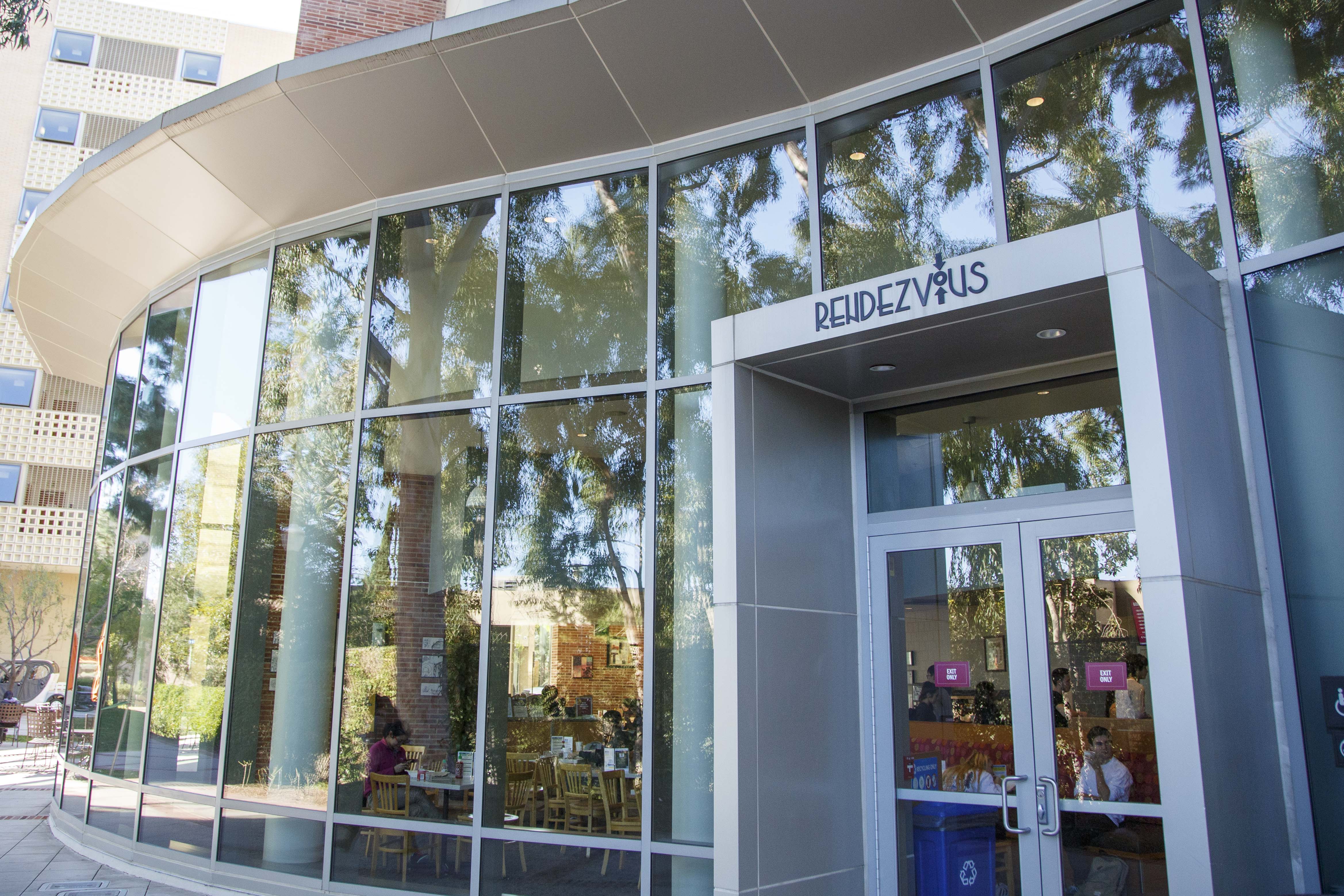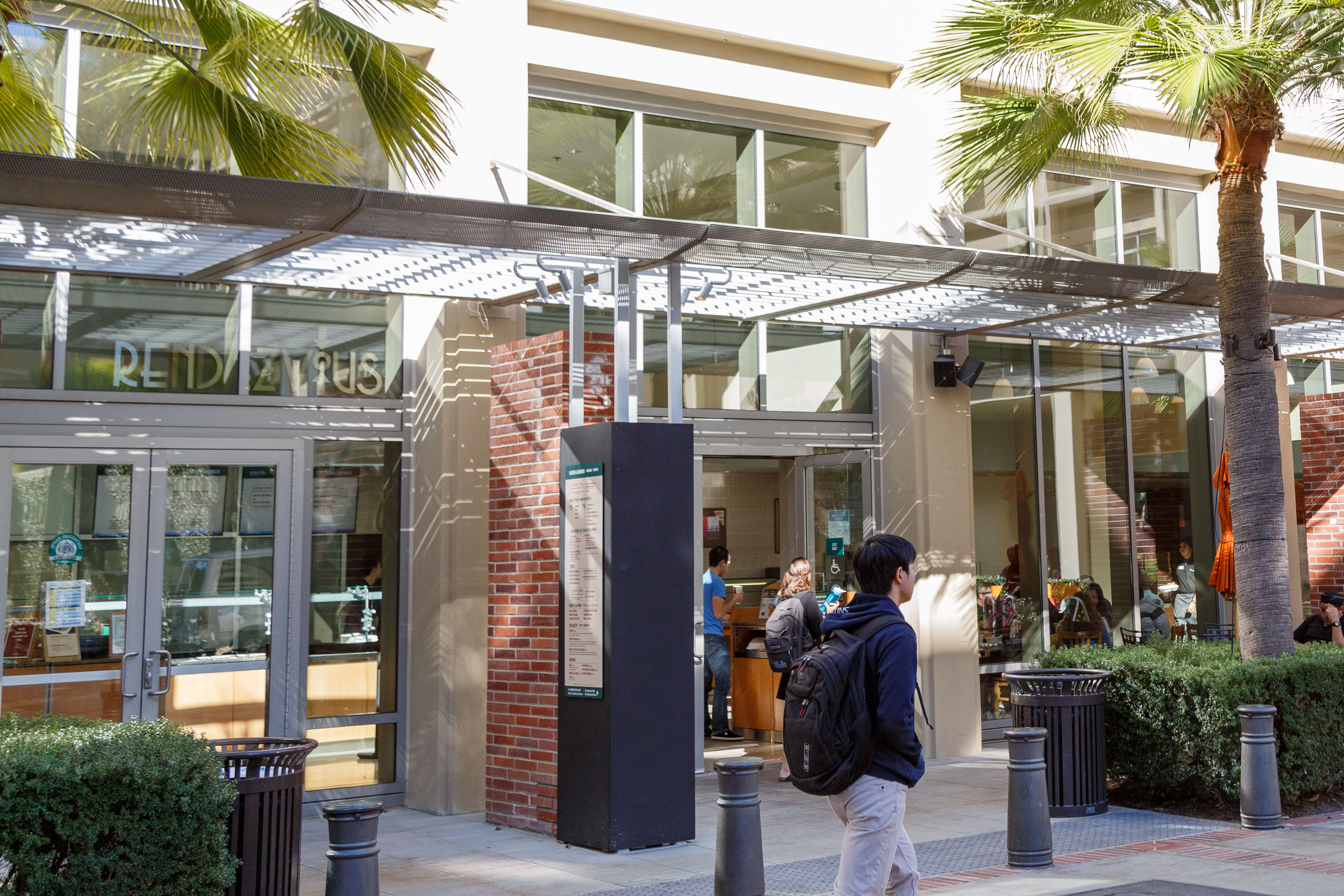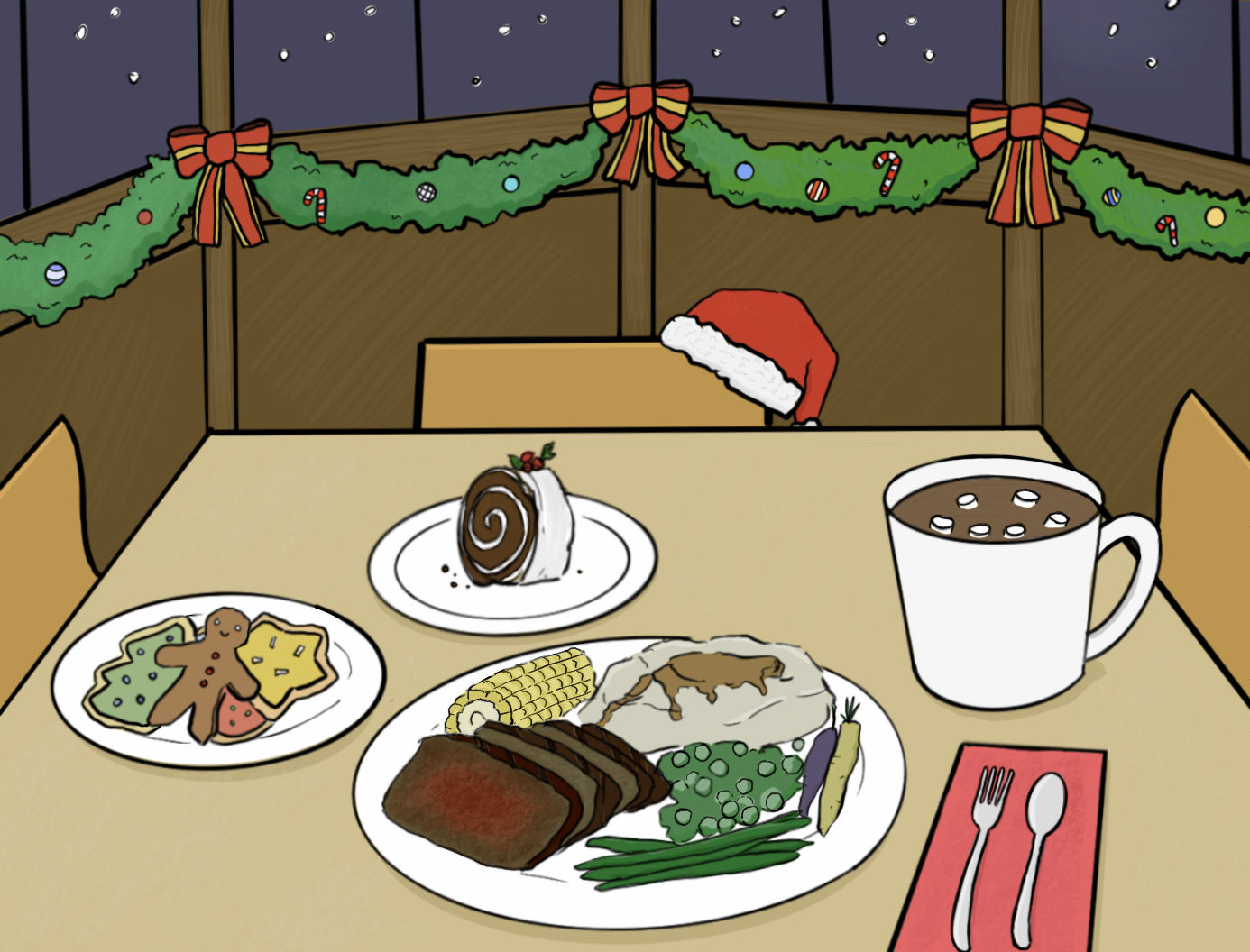Opinion: UCLA Dining must take steps to make fresh produce more accessible to students

(Nikole Liang/Daily Bruin)
By Ria Sanghera
Jan. 25, 2024 9:06 p.m.
While UCLA prides itself on its nationally recognized dining halls, fruits and vegetables remain largely inaccessible for many students despite being core components of a healthy diet.
Because of the limited variety of nutritious items available as takeout options, it may be more difficult for students to incorporate fruits and vegetables into busy days of classes. For instance, dining halls on the Hill now enforce a policy that prohibits students from taking fruit outside of the buildings. Along with this new rule, campus stores fail to offer a wide variety of fruit, further limiting students’ easy access to fresh produce.
The decision was made in consultation with the Policy Review Board before it was implemented this year with no plans to be reversed, said Rebecca Kendall, the senior communications manager for UCLA Residential Dining Services, in an emailed statement.
“The decision to implement the no take-out rule stemmed from the misuse of the take-out policy, where individuals were regularly taking multiple food items from our ‘All-You-Care-To-Eat’ restaurants,” Kendall said in the statement.
Nevertheless, preventing students from taking food out of the dining halls exacerbates the lack of to-go fresh fruit and vegetables available on campus. Besides the intuitive understanding that fresh produce is healthy, fresh fruit and vegetables have clear physical and mental health benefits.
According to the United States Department of Agriculture, fruit reduces the risk of cancer, heart disease and stroke, while increasing fiber, vitamin C and potassium intake. In a 2020 study, the National Library of Medicine found that life satisfaction, mental well-being, happiness and a decrease in depressive symptoms were all correlated with increased consumption of fruits.
Limited time and money are prevalent factors that restrict students’ ability to incorporate fruits and vegetables into their diets.
“Usually I try to find breakfast in the morning before class, and I can’t find anything healthy, so I end up getting a Pop-Tart or something high in sugar with not enough nutritional value,” said Gabriela Medina, a public health graduate student and communications chair of the UCLA Public Health Nutrition Club. “I get that fresh food is more expensive, but I think having the availability on campus would make it a lot easier for students.”
Not having options on campus can force students to venture into Westwood to Trader Joe’s or Whole Foods, which can be a far walk or even require transportation. Adding this extra time commitment can be demanding for students to fit within their event-filled schedules of classes, club obligations and social outings.
Additionally, the benefits of California’s food stamps program, CalFresh, do not extend to all food at UCLA campus stores. This leaves students in difficult financial situations to be deprived of the privilege to choose what they consume. This is also not the only area of concern on campus for limited nutritious options for students.
“Something that our organization noticed that we’re trying to work with is, the food closet in CPO (Community Programs Office) tends to have a lot of fresh and healthy options,” said Becca Nelson, a fourth-year molecular, cell and developmental biology student and the Undergraduate Students Association Council Student Wellness assistant commissioner. “We want to make sure students relying on that resource aren’t forced to eat ramen and canned food for the sake of meeting calories.”
For many students, the dining halls may be their only source for grab-and-go fruits. However, the variety of grab-and-go within the dining halls is usually limited to a few options, namely bananas and apples, said Brynne Burrows, a public health graduate student and event coordinator of the UCLA Public Health Nutrition Club.
Even with only two or three choices of fruit, the possibility of taking fruit out of the dining hall allowed students to enjoy fruit later in the day, rather than relegating them to unhealthy snack options to remain full, which Medina said she is often forced into.
However, Kendall said that the previous allowance for taking food out of dining halls led to the discarding of many unconsumed items, thus increasing costs for UCLA Dining. The implementation of a no-takeout rule has positively resulted in more food being consumed within the dining hall. Consequently, the budget for UCLA Dining Services also directly impacts future students’ housing fees. Financial losses from food waste result in increased costs in dining plans and UCLA Housing expenses to cover this.
With meal plans already ranging between approximately $5,000 to $6,000 per academic year, it is a reasonable assumption that for such an expensive price, students would at least be able to take a banana with them from their lunch or dinner.
Nelson said proposed solutions to this lack of availability must focus on making the healthy option the easiest option for students. This includes improving current systems to be more reasonably priced and easier to access for students, including promoting guidance for maintaining a healthy lifestyle.
Coupon books prioritizing healthy produce and encouraging places to eat other than the usual fast food chains would encourage people to expand their palates, Burrows said.
Medina added that meal recipes should be provided with few ingredients and fresh produce to ensure that students, especially those off-campus, can maintain healthy diets without too much stress.
“We’ve allocated resources for those personalized grocery boxes for students experiencing housing security,” Nelson said. “The health, nutrition and fitness committee is working on a teaching kitchen pilot with the Ashe Center to make healthy food classes more accessible.”
In addition, vending machines are being filled with options clearly labeled “Eat-Well” for students. Improvements are being made to expand healthy options, and these must continue to become visibly apparent on campus.
Burrows added there are temporary solutions in place, such as increased infographics about sustainability and the carbon footprint of what we consume in dining halls. But how many students are reading these posters? And what change is actually occurring? While these questions remain unanswered, there is a clear need for a more robust solution.
The UCLA stores seem like the most ideal locations for students to purchase produce, but this is not without its own set of limitations and obstacles, especially due to fresh produce being perishable.
“(It would require) substantial financial investment, as well as more square footage in the store, staff, further refrigeration and front-and-back of house storage. This will then need to be balanced against pricing levels and demand,” Christina Manuel, the Associated Students UCLA communications and social media manager, said in an emailed statement.
However, there have been some conscious efforts from the USAC Student Wellness Commission to bridge this gap, especially in helping to fund reservation spaces for local farmers to come to UCLA and provide their produce at Bruin Plaza.
“I wish that the farmers market could happen more often on campus, and maybe UCLA could pay the farmers more so they could offer their produce at a lower cost to students to incentivize students to shop there,” Burrows said.
Until produce becomes more accessible on campus and fruits and vegetables do not feel like a splurge for students, UCLA must continue to work to prioritize students’ nutritional needs to remain worthy of its No. 1 dining status.





